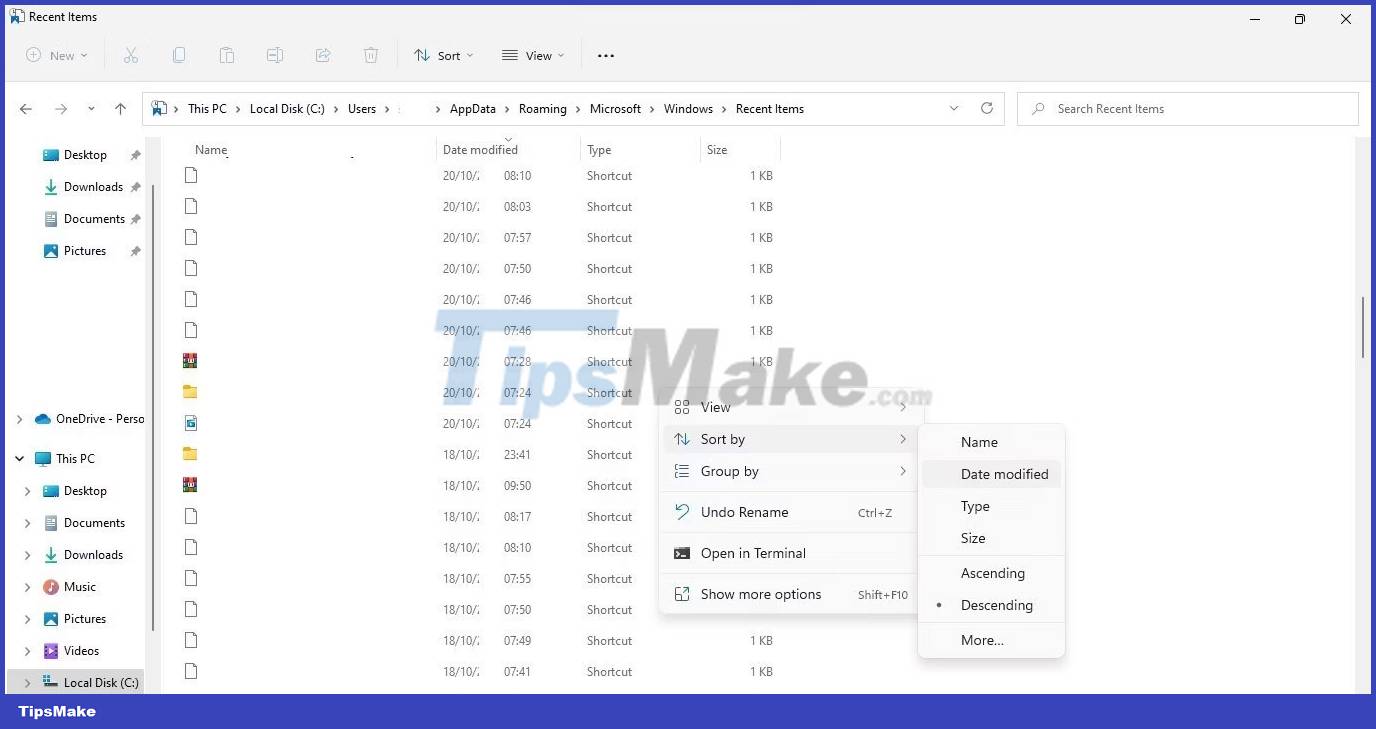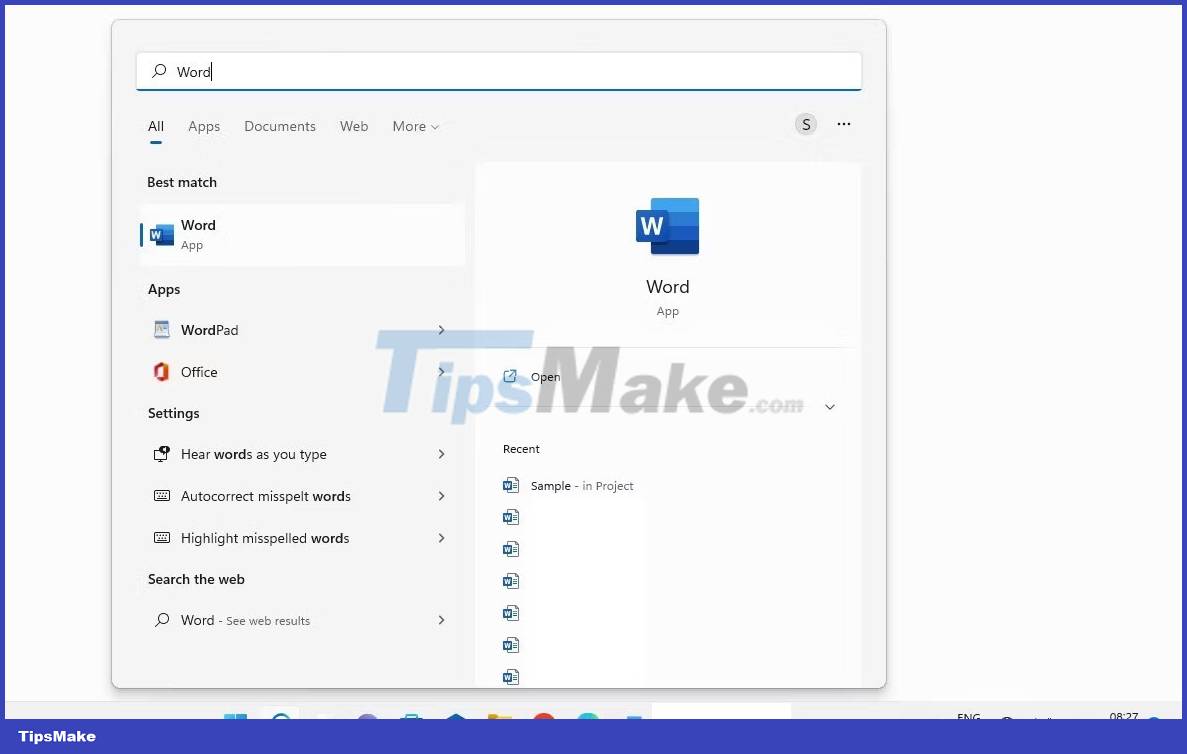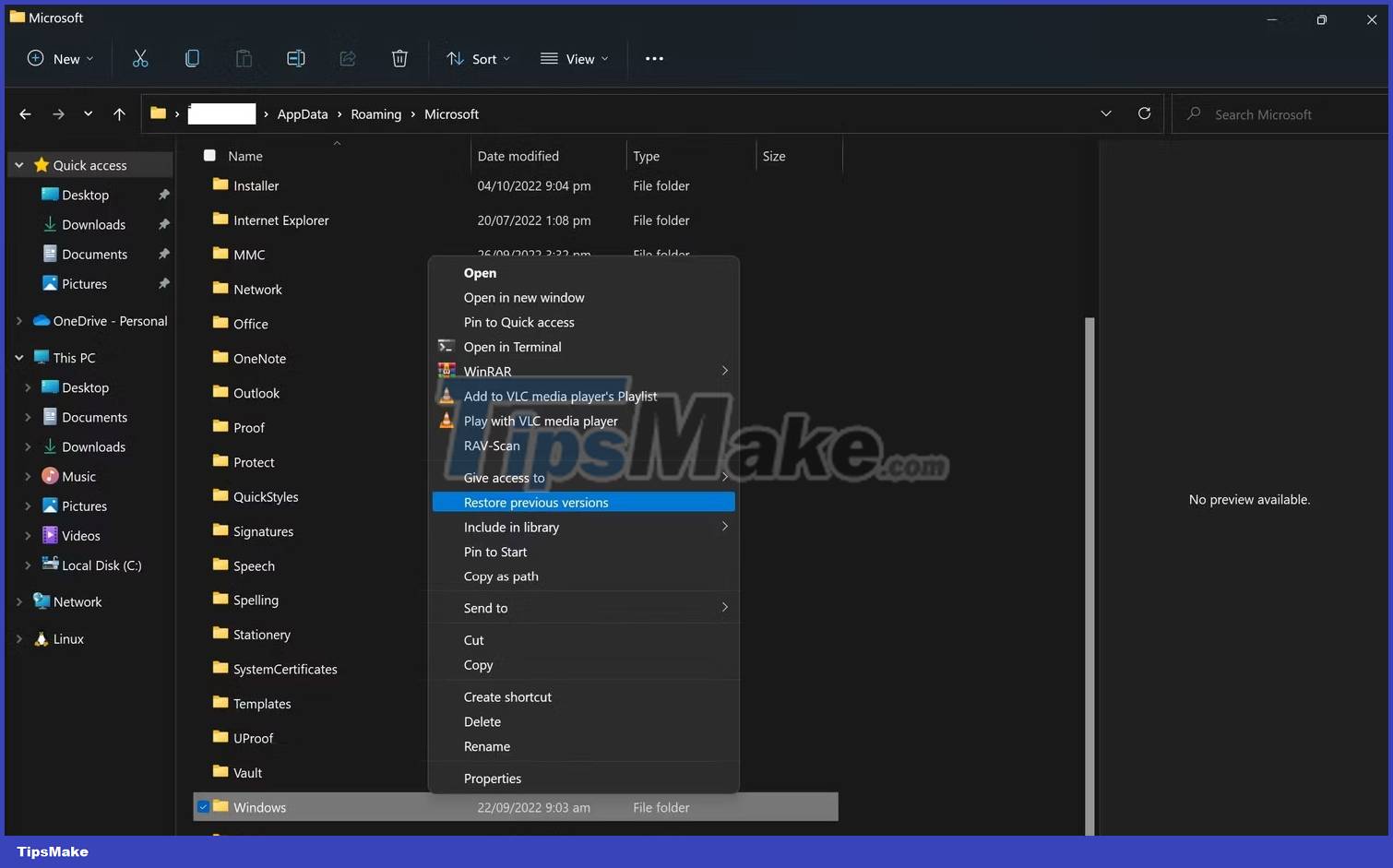How to view recently opened files on Windows
Locating recently opened files is extremely easy with Windows. So whether you want to re-edit recently closed files or keep track of who accessed them before, you can do it easily.
In this article, we will discuss how to view recently opened files on Windows, when they were last modified, and how to recover if they have been deleted.
How to view recently opened files on Windows
Windows offers two ways to view recently opened files; use Quick Access or the Recent Items folder.
While Quick Access only shows some recently opened files (about 20), the Recent Items folder keeps a history of files and folders opened many days ago. So users can go back to check which files were opened on a particular day, even a week or a month ago.
Furthermore, Quick Access does not allow you to sort recently opened files by specific parameters, but this is very easy to do in the Recent Items folder. Let's see how you can access recently opened files on Windows using both methods.
How to view recently opened files in Quick Access
You can view recently opened items in Quick Access by opening File Explorer from the taskbar and selecting Quick Access from the left sidebar. You will then see a list of recently opened files in the right pane. Scroll down to find the recent file or folder you're looking for.
In most cases, Quick Access displays recently opened files in File Explorer; however, there are times when it crashes and stops showing them.
If you can't fix the error that Quick Access doesn't show recently opened files or want a more in-depth analysis of recently opened items, you can switch to method 2 - using the Recent Items folder.
How to view recently opened items in the Recent Items folder
Follow these steps to view recently opened items in the Recent Items folder:
1. From the taskbar, open File Explorer.
2. Paste the following link into the File Explorer navigation bar.
C:UsersusernameAppDataRoamingMicrosoftWindowsRecent3. Press the Enter key.
Note : Don't forget to replace your real username in the above mentioned path. If you don't do this, you won't be able to access the Recent Items folder.
The steps above will take you to the Recent Items folder, where you can view recently opened items. And depending on how many recently opened files and folders, you can even check which files and folders were opened last month.
How to sort recently opened items
When viewing recently opened items in the Recent Items folder, you can sort them by various parameters, such as modification date, type, size, author, etc. To sort items according to a specific parameter, perform the following steps:
1. Right click on the same folder.
2. Navigate to Sort by in the context menu.
3. Click the parameter you want to sort files by.

4. If you can't find the parameter you want to sort the items by, click the More. button in the Sort by menu , check the box for details you want to sort the data by, and click OK .

5. The parameter will then appear in the Sort by menu , where you can select it to sort the recently opened items.

How to view recently opened files for specific applications on Windows
Although most programs allow users to view recently opened files within the application itself, Windows also keeps track of recently opened files in most of those applications.
To see recently opened files for a specific app, go to Windows Search and enter the app name. In the right pane of search results, you'll see recently opened items in that app, accessible with one click.
To see more recently opened items than those that appear in search results, open the app and navigate to the app's recent files section.

How to view recently deleted files from Quick Access
Quick Access is an access point that allows you to quickly access recently closed files. Therefore, even if you or someone else who shares a computer with you deletes files from Quick Access, they will not be deleted from their original location. You can still access recently closed files in the main Recent Items folder using the same steps as the article explained earlier.
How to view recently opened files that have been deleted from the Recent Items folder
When you delete File Explorer history or recently opened files from the Recent Items folder, they are permanently deleted from Windows. This data recovery is complex and the chances of successful implementation are slim. However, some alternatives may allow you to access recently opened files again.
Go to the Recent Items folder location , right-click on the folder and select Restore previous versions from the context menu. Then, click on the latest version of the folder (if available) and then click Restore .
If this option is not available in the context menu for the Recent Items folder, repeat the process for its parent folder, "Windows". Right-click on the Windows folder and select Restore previous versions from the context menu.

If neither of these folders have a previous version, the only way is to use third-party recovery software to recover the data in the Recent Items folder, although the chances of success are low.
You should read it
- Instructions for deleting the recently opened file list in Word 2013
- Fix 'These Files Can't Be Opened' error on Windows 10 / 8.1 / 7
- How to Remove .Ds_Store Files on Mac OS X
- Instructions for converting Docx to Doc files online
- Frame view VIEW in SQL
- How to Unrar
- 3 ways to delete recent files and folders in Windows
- Delete the My Recent Documents trace in MS Office 2007
May be interested
- How to view recently deleted files on Windows 10?
 usually when you delete any file on a windows 10 computer by right-clicking on the file and selecting delete or selecting the file then pressing the delete key, then the file will be moved to recycle bin. or another way to permanently delete files is to press shift + delete, and windows will move these files from recycle bin.
usually when you delete any file on a windows 10 computer by right-clicking on the file and selecting delete or selecting the file then pressing the delete key, then the file will be moved to recycle bin. or another way to permanently delete files is to press shift + delete, and windows will move these files from recycle bin. - Frame view VIEW in SQL
 in sql, a view view is a virtual table in a database whose content is defined through a certain sql statement.
in sql, a view view is a virtual table in a database whose content is defined through a certain sql statement. - The shortcut file cannot be opened, what should you do?
 shortcut files that cannot be opened are a common situation on computers. if you are having a headache because of this problem, read the article now!
shortcut files that cannot be opened are a common situation on computers. if you are having a headache because of this problem, read the article now! - Adobe Reader Windows 10 version XI 11.0.23
 adobe reader is the best software to read pdf files on windows 10 at present. adobe reader supports users to view pdfs on windows 10, print pdf files and annotate them to pdf documents.
adobe reader is the best software to read pdf files on windows 10 at present. adobe reader supports users to view pdfs on windows 10, print pdf files and annotate them to pdf documents. - How to View Recently Deleted Files on Windows 10/11?
 normally, when you delete any file on your windows 10 computer by right-clicking on the file and selecting delete or selecting the file and pressing the delete key, the file will be moved to the recycle bin. or another way to delete files permanently is to press the shift + delete key combination, and windows will move these files from the recycle bin.
normally, when you delete any file on your windows 10 computer by right-clicking on the file and selecting delete or selecting the file and pressing the delete key, the file will be moved to the recycle bin. or another way to delete files permanently is to press the shift + delete key combination, and windows will move these files from the recycle bin. - Delete the My Recent Documents trace in MS Office 2007
 after opening the document on ms word, the program will automatically store the most recently opened files so you can quickly reopen it when needed ...
after opening the document on ms word, the program will automatically store the most recently opened files so you can quickly reopen it when needed ... - How to change the Group by view of a folder in Windows 10
 in windows, you can change the template, column width, group by view, sort by, etc. for files in the folder the way you want. this tutorial will show you how to change the group by view for a folder in file explorer on windows 10.
in windows, you can change the template, column width, group by view, sort by, etc. for files in the folder the way you want. this tutorial will show you how to change the group by view for a folder in file explorer on windows 10. - How to hide files, show hidden files, view hidden folders and file extensions on Windows 7/8/10?
 to view hidden files, display file extensions or hide system files on windows is quite simple. readers can see the instructions for displaying hidden files, see the file extension in this article.
to view hidden files, display file extensions or hide system files on windows is quite simple. readers can see the instructions for displaying hidden files, see the file extension in this article. - How to hide the 'Task View' button on Windows 11
 similar to windows 10, windows 11 provides users with a 'task view' button on the taskbar (taskbar). when you click this button, you can see a list of tasks running in the system, especially open files, windows and desktop.
similar to windows 10, windows 11 provides users with a 'task view' button on the taskbar (taskbar). when you click this button, you can see a list of tasks running in the system, especially open files, windows and desktop. - How to show hidden files on Windows 11
 show hidden files on win 11 helps you view all files in usb, hard drive, folder, newly downloaded files... most fully. in this article, software tips shares with you the most detailed way to show hidden files on windows 11.
show hidden files on win 11 helps you view all files in usb, hard drive, folder, newly downloaded files... most fully. in this article, software tips shares with you the most detailed way to show hidden files on windows 11.










 How to Enable and Use Script Execution Policy in Windows PowerShell
How to Enable and Use Script Execution Policy in Windows PowerShell How to use My Favorite Files to create favorite files on Windows
How to use My Favorite Files to create favorite files on Windows Tiny 10: Ultra-light Windows 10 version for weak PCs, just 2 GB RAM and 16 GB hard drive
Tiny 10: Ultra-light Windows 10 version for weak PCs, just 2 GB RAM and 16 GB hard drive Microsoft adds a new zoom shortcut in Word
Microsoft adds a new zoom shortcut in Word Key differences between hardware VPN and software VPN
Key differences between hardware VPN and software VPN Windows 365 Apps Officially Launched for Windows 10 and 11
Windows 365 Apps Officially Launched for Windows 10 and 11